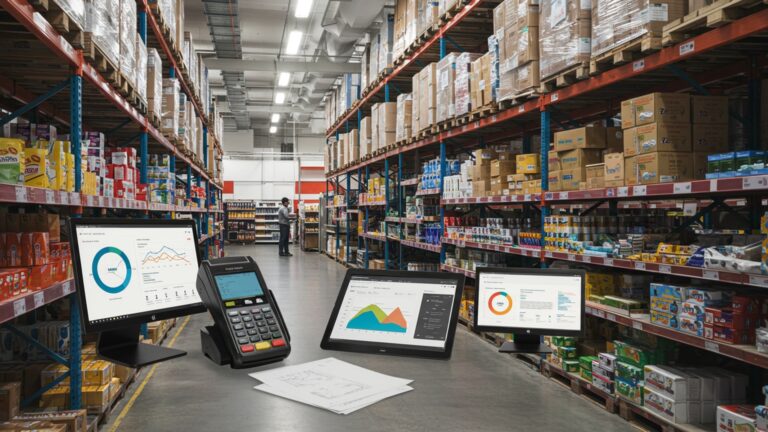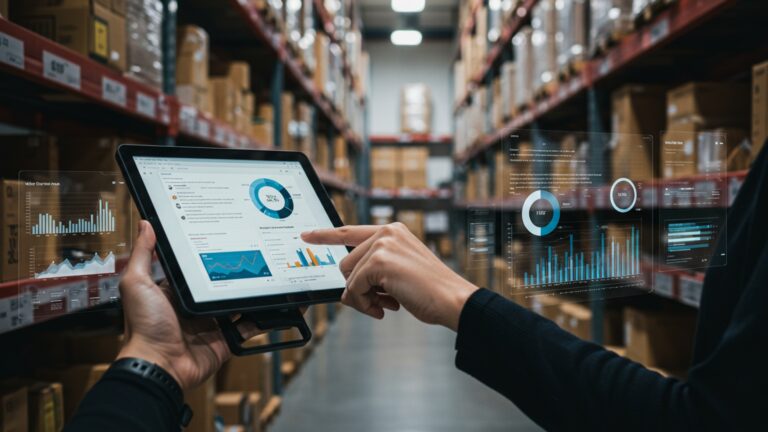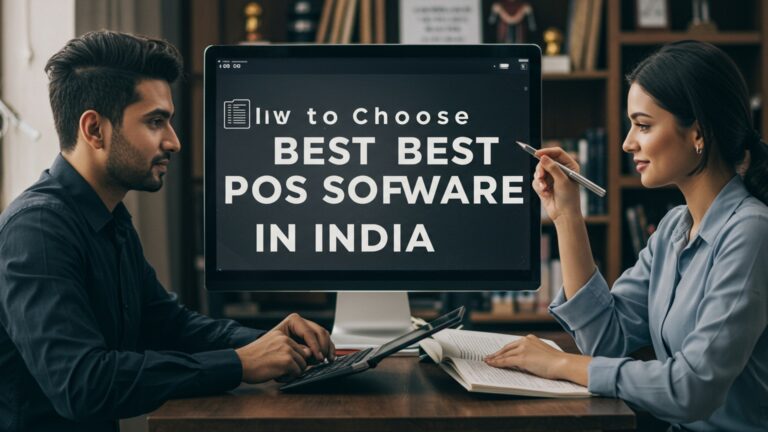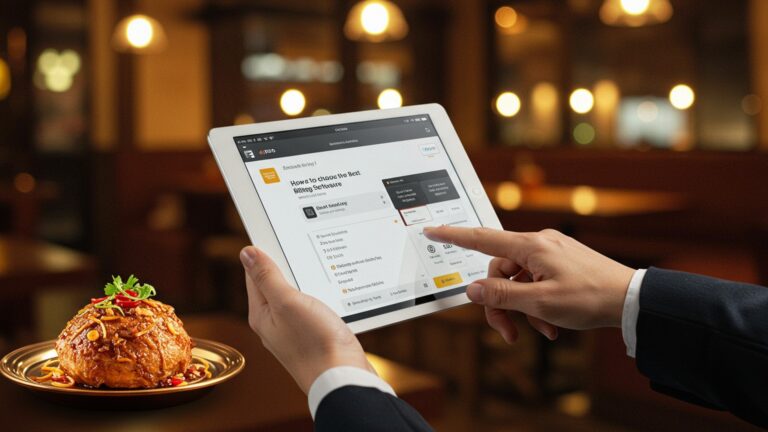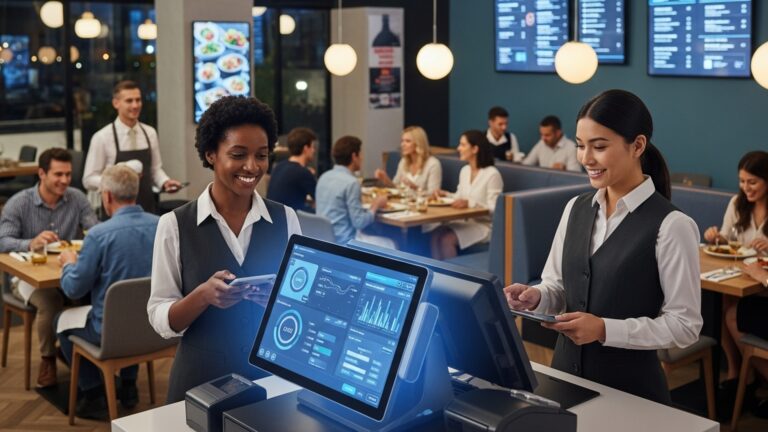How to Choose the Best Cloud POS for Your Indian Restaurant 5 Tips
The dynamic landscape of Indian restaurants, from bustling dhabas to upscale fine dining, increasingly demands operational agility and digital integration. Manual processes are now a relic, as establishments embrace technology to streamline everything from kitchen order management to customer feedback. A sophisticated Cloud-based restaurant POS India solution has emerged as a non-negotiable strategic asset, crucial for navigating the complexities of multi-channel ordering, integrating seamlessly with food aggregators like Swiggy and Zomato. optimizing diverse regional ingredient inventories. As consumer expectations for swift, personalized service and data-driven insights grow, choosing the optimal POS system is paramount for profitability and sustainable growth in this competitive market.
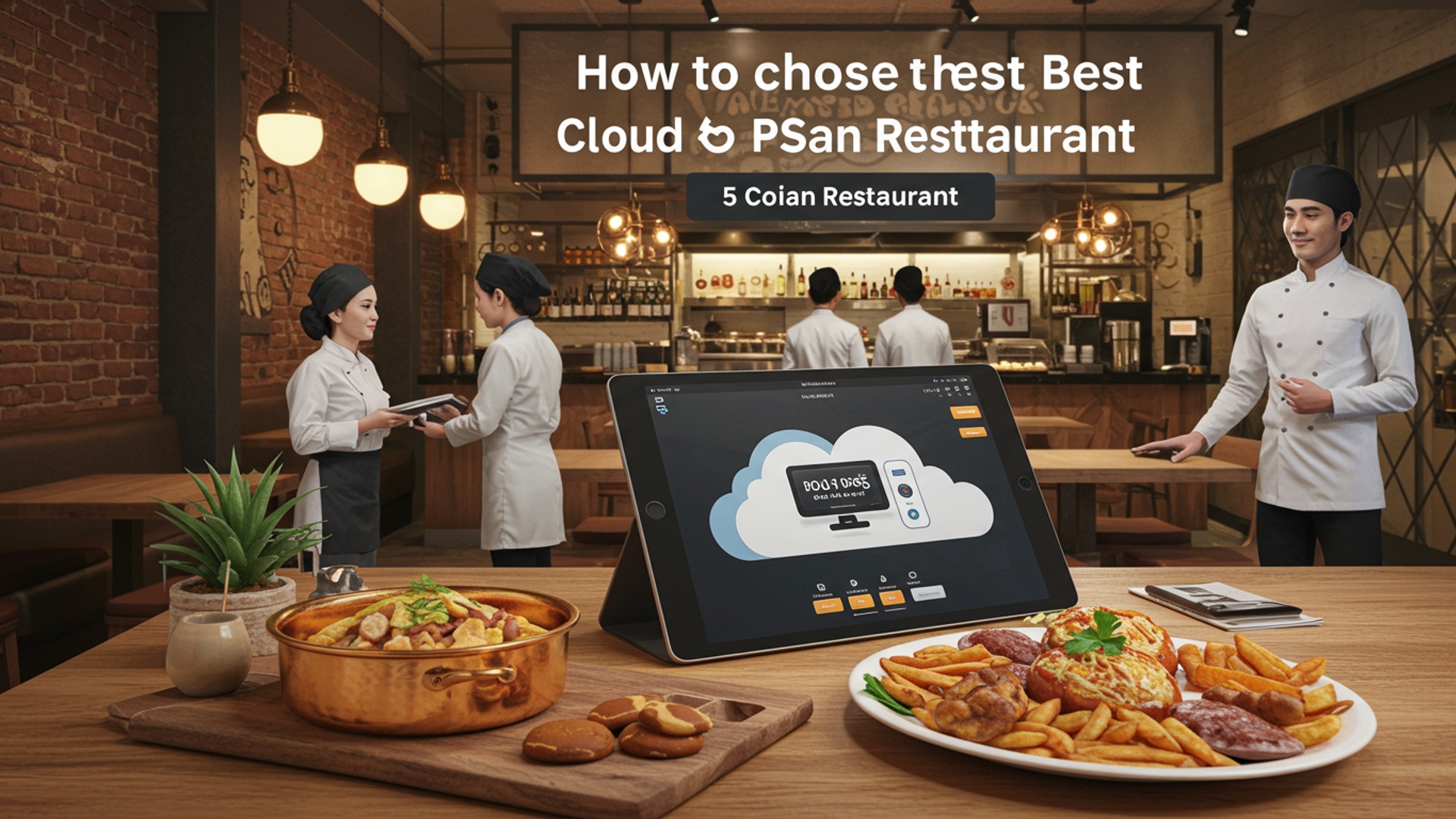
Understanding Cloud POS for Your Indian Restaurant
In the bustling culinary landscape of India, managing a restaurant efficiently is paramount to success. Traditional Point-of-Sale (POS) systems, often reliant on on-premise servers and clunky hardware, are increasingly becoming obsolete. This is where a Cloud POS system steps in as a game-changer. A Cloud POS, or cloud-based point-of-sale system, operates entirely online. Instead of storing data on a local computer or server, all insights—from menu items and sales transactions to inventory and customer data—is stored securely on remote servers accessible via the internet.
For an Indian restaurant, this shift from traditional to cloud-based is more than just an upgrade; it’s a strategic move. Indian restaurants often grapple with unique challenges: diverse and extensive menus with complex modifiers, peak hour rushes that demand rapid order processing, a growing reliance on third-party delivery aggregators. the potential for multiple outlets spread across different locations. A Cloud POS system addresses these by offering flexibility, real-time data access. enhanced operational control from anywhere, anytime.
Consider a scenario: a popular South Indian restaurant chain in Bangalore. During peak lunch hours, their traditional POS would often lag, leading to long queues and frustrated customers. Switching to a
Cloud-based restaurant POS India
solution allowed them to process orders faster, integrate seamlessly with Swiggy and Zomato. monitor sales across all their branches in real-time. This not only improved customer satisfaction but also provided invaluable insights into their most popular dishes and peak business times, helping them optimize staffing and inventory.
Tip 1: Assessing Core Features and Functionality
When evaluating a
Cloud-based restaurant POS India
solution, the foundational step is to scrutinize its core features. These features are the backbone of your daily operations and must align perfectly with the specific needs of an Indian restaurant. Look beyond the basic transaction processing and delve into the nuances that make a significant difference.
- Menu Management
- Order Management
- Billing & Payments
- Inventory Management
- CRM & Loyalty Programs
- Reporting & Analytics
Indian cuisine is renowned for its vastness, with dishes often having multiple variations, spice levels. accompaniments. Your POS must support complex menu hierarchies, allowing for easy addition of items, modifiers (e. g. , “extra cheese,” “no onion,” “less spicy”), combos. daily specials. The ability to update prices and availability across all channels instantly is crucial.
A robust system should handle dine-in, takeaway. delivery orders with equal finesse. Look for features like table management, KDS (Kitchen Display System) integration for efficient kitchen workflow. seamless order routing. For Indian restaurants, integration with popular third-party food delivery platforms (Swiggy, Zomato, etc.) is non-negotiable to streamline operations and prevent manual entry errors.
Beyond basic cash and card processing, the POS should support UPI (Unified Payments Interface), mobile wallets. other popular digital payment methods prevalent in India. Features like split billing, applying discounts, loyalty points redemption. generating detailed invoices are essential for a smooth customer experience.
This is often a pain point for Indian restaurants due to the sheer number of ingredients and perishable goods. A good Cloud POS will offer real-time inventory tracking, recipe management (linking raw materials to finished dishes), automated stock alerts. waste management tools. This helps in minimizing spoilage, optimizing purchasing. controlling food costs. For example, tracking the usage of specific spices for a popular Biryani dish can help predict demand and avoid stockouts.
Building customer loyalty is vital. The POS should help capture customer data, track purchase history. facilitate loyalty programs (points, discounts, personalized offers). This allows you to engage with your customers effectively, driving repeat business.
Data is power. The system should generate comprehensive reports on sales, popular dishes, peak hours, staff performance, inventory turnover. more. These insights are critical for making informed business decisions, identifying trends. optimizing operations.
Tip 2: Scalability and Integration Capabilities
As your Indian restaurant grows, so do your operational demands. A key differentiator for a superior
Cloud-based restaurant POS India
solution is its scalability and ability to integrate with other essential business tools. Choosing a system that can grow with you saves significant time and resources in the long run.
- Scalability
- Integration with Third-Party Tools
- Online Ordering Platforms
- Payment Gateways
- Accounting Software
- Staff Management/HR Tools
- CRM Platforms
- API Availability and Ease of Integration
Your POS should be able to handle increasing transaction volumes without performance degradation. If you plan to open more branches, the system should allow for easy addition of new outlets, centralized menu management. consolidated reporting across all locations. A Cloud POS inherently offers this scalability, as server resources can be dynamically adjusted to meet demand. Imagine a regional chain expanding from Chennai to Hyderabad; a scalable POS ensures consistent operations across both cities.
The modern restaurant ecosystem relies on a network of specialized software. Your Cloud POS must integrate seamlessly with:
Beyond aggregators like Swiggy/Zomato, consider your own branded online ordering website or app. Direct integration prevents manual order entry and potential errors.
Ensure compatibility with multiple payment processors for flexibility and competitive rates.
Integration with tools like Tally, Zoho Books, or QuickBooks streamlines financial reporting, reduces manual data entry for your accountant. ensures accurate bookkeeping.
For larger establishments, integration can help manage shifts, payroll. employee performance.
For deeper customer relationship management beyond what the POS offers natively.
A good vendor will offer robust APIs (Application Programming Interfaces) that allow for custom integrations or connections with less common software. The ease with which these integrations can be set up is crucial. A complex integration process can negate the benefits of having these tools. Always inquire about the vendor’s integration roadmap and their support for new partnerships.
Tip 3: Data Security and Reliability
In an increasingly digital world, the security of your business data and the reliability of your POS system are non-negotiable, especially for a
Cloud-based restaurant POS India
solution. Your entire operation, from taking orders to processing payments, hinges on the system’s uptime and the safety of sensitive insights.
- Importance of Data Security in the Cloud
- Data Encryption
- Access Controls
- Compliance
- Regular Security Audits
- Backup and Disaster Recovery
- Automated Backups
- Redundancy
- Recovery Time Objective (RTO) and Recovery Point Objective (RPO)
- Uptime Guarantees and Offline Mode Capabilities
When your data is stored on remote servers, it’s crucial to comprehend how it’s protected. Inquire about the vendor’s security protocols, including:
Is your data encrypted both in transit (when it moves between your device and the cloud server) and at rest (when it’s stored on the server)? Look for industry-standard encryption protocols like SSL/TLS and AES-256.
Who has access to your data? How are user roles and permissions managed? Ensure granular control over who can view or modify specific details.
Does the vendor comply with relevant data protection regulations (e. g. , GDPR, if applicable, or local Indian regulations)?
Does the vendor conduct regular security audits and penetration testing to identify and fix vulnerabilities?
A data breach can be catastrophic, leading to financial losses, damage to your reputation. legal repercussions. For instance, a famous Mumbai restaurant faced a data leak from their old, unsecured POS, compromising customer payment details. This could have been avoided with a secure cloud solution.
Accidents happen. systems can fail. A reliable Cloud POS will have robust backup and disaster recovery plans in place. This means:
Is your data backed up regularly and automatically? How frequently are backups performed?
Are data centers geographically dispersed to ensure continuity even if one location faces an outage?
comprehend how quickly the system can be restored after a failure (RTO) and how much data might be lost (RPO).
Internet connectivity in India can sometimes be unpredictable. A critical feature for any
Cloud-based restaurant POS India
is its ability to function even when the internet is down.
- Uptime SLA
- Offline Mode
Look for vendors offering a high uptime Service Level Agreement (SLA), typically 99. 9% or higher. This indicates their commitment to system availability.
Can the POS continue to process orders, print receipts. manage basic operations if the internet connection is lost? Once connectivity is restored, all data should automatically sync with the cloud. This ensures that your restaurant never grinds to a halt due to network issues, a common concern for restaurateurs in many parts of India.
Tip 4: User Experience (UX) and Training Support
Even the most feature-rich
Cloud-based restaurant POS India
system is ineffective if your staff struggles to use it. A smooth user experience (UX) and comprehensive training support are crucial for seamless adoption and maximum operational efficiency.
- Ease of Use for Staff
- Intuitive Interface
- Multilingual Support
- Customization
- Training Resources Provided by the Vendor
- Onboarding Process
- Training Materials
- Regular Updates and Feature Explanations
- Customer Support Availability and Quality
- 24/7 Support
- Multiple Channels
- Local Language Support
- Response and Resolution Times
The POS interface should be clean, logical. easy to navigate. Your staff, who may have varying levels of tech proficiency, should be able to quickly learn and master the system for tasks like taking orders, processing payments. managing tables. Drag-and-drop functionality, clear icons. minimal clicks for common tasks are indicators of good UX.
In India, where staff often come from diverse linguistic backgrounds, multilingual support (especially Hindi and regional languages) can be a significant advantage, reducing errors and improving staff comfort.
Can the interface be customized to suit your specific restaurant’s workflow? For example, quick access buttons for popular dishes or common modifiers can speed up service during rush hours.
A restaurant in Jaipur, for instance, saw a significant reduction in order errors and faster table turnover after switching to a Cloud POS with an intuitive, icon-based interface that their local staff quickly adapted to, despite initial reservations about new technology.
What kind of onboarding and initial setup support does the vendor offer? Do they provide on-site training or comprehensive remote sessions?
Are there easily accessible training manuals, video tutorials. FAQs available for staff to refer to? These resources are invaluable for new hires and for refreshing existing staff’s knowledge.
As the POS system evolves, how does the vendor communicate new features and provide training on them?
Restaurants operate beyond typical business hours. Can you get support at 10 PM on a Sunday if your system encounters an issue?
Is support available via phone, email, chat, or even WhatsApp?
Having support staff who comprehend local nuances and can communicate in regional languages can make a huge difference in resolving issues quickly and effectively.
Inquire about their typical response and resolution times for critical issues. A system going down during peak dinner service can cost you significant revenue, so swift support is paramount.
Tip 5: Cost-Effectiveness and Return on Investment (ROI)
While the initial cost of a
Cloud-based restaurant POS India
system might seem like an investment, it’s crucial to evaluate its long-term cost-effectiveness and potential return on investment (ROI). A cheaper system upfront might end up costing more in hidden fees, poor performance, or lack of support.
- Subscription Models vs. One-Time Fees
- Hidden Costs
- Hardware Costs
- Setup and Installation Fees
- Training Fees
- Payment Gateway Fees
- Integration Fees
- Support Tiers
- Calculating ROI for a Cloud-based restaurant POS India Solution
- Increased Efficiency
- Cost Reduction
- Improved Sales
- Reduced Downtime
- Scalability for Growth
Most Cloud POS systems operate on a subscription model (monthly or annually), which typically includes software updates, maintenance. support. This differs from traditional POS systems that often require a large upfront purchase for software licenses and hardware, followed by separate maintenance contracts. Compare these models carefully:
| Feature | Cloud POS (Subscription) | Traditional POS (One-time Fee) |
|---|---|---|
| Upfront Cost | Lower (monthly/annual fee) | Higher (large initial investment) |
| Maintenance & Updates | Usually included in subscription | Separate contracts, potentially costly |
| Hardware | Often uses off-the-shelf tablets/PCs, flexible | Requires specific, often proprietary hardware |
| Scalability | Easy to scale up/down with subscription tiers | Can be expensive and complex to scale |
| Accessibility | Anywhere, anytime via internet | Limited to on-premise location |
Always scrutinize the pricing structure for potential hidden costs. These can include:
While Cloud POS uses standard hardware, you still need to purchase tablets, receipt printers, cash drawers, etc.
Some vendors charge for initial setup, data migration, or on-site installation.
Beyond basic onboarding, extensive or customized training might incur extra costs.
grasp the transaction fees charged by integrated payment processors.
Some integrations with third-party apps might come with additional charges.
Basic support might be included. premium 24/7 or dedicated account manager support could be an add-on.
The ROI isn’t just about direct cost savings; it’s about the value the system brings to your business. Consider:
Faster order processing, reduced errors. streamlined kitchen operations lead to higher table turnover and happier customers.
Better inventory management reduces food waste and optimizes purchasing. Reduced manual labor for tasks like accounting data entry.
Effective CRM and loyalty programs drive repeat business. Data analytics help identify best-selling items and optimize menu pricing.
Reliable offline mode and quick support minimize revenue loss from system failures.
The ability to easily expand to new locations without a massive IT overhaul is a significant long-term saving.
For example, a Goan restaurant struggled with high food waste due to manual inventory. Implementing a Cloud POS with robust inventory features helped them reduce waste by 15% in six months, directly contributing to a positive ROI that far outweighed the monthly subscription fee.
Conclusion
Choosing the ideal Cloud POS for your Indian restaurant isn’t merely about features; it’s about finding a technological partner that truly understands the rhythm of your kitchen and the nuances of Indian hospitality. Remember, the best system will seamlessly handle everything from complex Masala Dosa orders to multi-course biryani deliveries, even when your internet connection decides to take a break. My personal tip? Always insist on a live demo and speak directly with other Indian restaurant owners using the system. You’ll gain invaluable insights into real-world performance, especially regarding local support and integration with popular platforms like Zomato or Swiggy. Don’t settle for “good enough.” Take the leap, invest wisely. watch your operations streamline, customer satisfaction soar. your restaurant thrive in India’s competitive culinary landscape. The future of efficient service and sustained growth awaits. For more insights on optimizing your operations, explore the advantages of restaurant billing software in India.
More Articles
7 Essential Tips to Choose the Best Restaurant POS Software in India
How to Set Up Cloud Based POS Software for Business Growth
How to Select the Perfect POS Billing Software for Your Business
How to Implement POS Software for Your Grocery Store A Complete Guide
FAQs
What’s the first thing I should look for in a Cloud POS for my Indian restaurant?
Start by checking if it truly understands Indian cuisine. Can it handle complex customisations like ‘no onion, extra garlic’ or specific spice levels? Does it make managing thalis, combos. daily specials easy? This is crucial for smooth operations.
Is it easy for my staff to actually use this POS?
Absolutely, user-friendliness is key! Your staff, from order-takers to kitchen, needs to pick it up quickly. Look for intuitive interfaces, simple order placement. clear table management. Less training time means more focus on guests.
What if the internet goes down? Will my restaurant stop?
That’s a valid concern, especially in India! A good Cloud POS should have robust offline capabilities. It should let you continue taking orders, processing payments (if integrated offline). managing operations even without an internet connection, syncing everything once online again. Don’t get stuck!
How do I balance cost with all the features I might need?
It’s all about value. Don’t just pick the cheapest option. List your absolute must-have features (like customisations, inventory, reporting) and then compare pricing models. Some offer tiered subscriptions; pick one that scales with your business without breaking the bank initially.
Should my POS connect with other apps like online ordering or payment?
Definitely! Seamless integration is a game-changer. A POS that talks to your online ordering platforms, popular payment gateways. even accounting software streamlines operations, reduces manual errors. gives you a holistic view of your business.
Can a Cloud POS help me grasp how my business is doing?
Yes. it’s a huge advantage! Look for a system with strong reporting and analytics. You should be able to track sales trends, popular dishes, busiest times, inventory movement. even staff performance. This data helps you make smarter business decisions.
What kind of support should I expect?
Good support is non-negotiable. Check for providers offering prompt, reliable customer service, ideally with local teams or knowledge of the Indian market. You’ll want help readily available for any technical glitches or questions, especially during peak hours.

